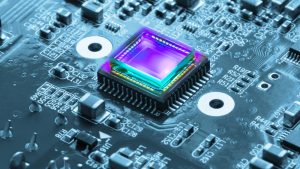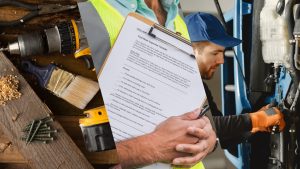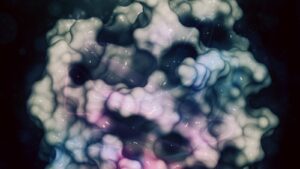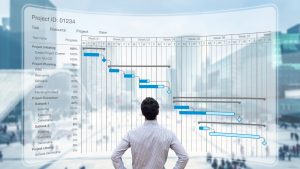Also known as a hydraulic gradient, a hydraulic grade refers to the amount of water flowing in a pipe. Where the pipe is healthy, the water level is controlled as it flows through the pipes. In contrast, where pipes are not up to standard and there is too much pressure, the hydraulic grade may have higher water levels, leading to potential breakage or outbursts in pumps. In other words, a hydraulic grade allows asset managers to determine the level of atmospheric pressure present as the water level reflects its changes in the pipe. This also helps engineers and designers assess the design flows for drainage systems in the water industry. It also contributes to the wastewater industry by assisting managers in detecting issues in the pipes that could result in wastewater exiting incorrectly. In technical terms, hydraulic grade considers the change in water level per unit distance and the direction of maximum head decrease. A mathematical calculation is used to assess hydraulic grade by considering the difference between the higher and the lower heads. The more significant the difference in the total head, there will be the higher propensity of flow. This complex process, however, can be simplified by using advanced technologies in water and wastewater asset management. This article will explore a few of the best modern technologies emerging to calculate and predict hydraulic grade.
Modern Technology Used to Calculate and Predict Hydraulic Grade
For a long time, water and wastewater utilities have adopted hydraulic models which process simulations in batches by infusing historical data as input parameters. Today, many technologies are used to speed up the process whilst also increasing the accuracy and reliability of predictive insights. Here are five must-use technologies that can eliminate pipes from malfunctioning due to factors negatively affecting hydraulic grades.
Industrial Internet of Things (IIoT) Sensors to Increase Fluid Powers
Traditionally, electromagnetically controlled valves, commonly regarded as solenoid valves, were used to manage fluid flow in the hydraulic system. However, this is not as efficient or powerful as advanced technologies introduced over the last few years. Hence, water asset managers integrate IIoT sensors into the valves and pumps. The sensors monitor the temperature, flow and other variables in real-time. Through these sensors and the power of data analytics, a problematic hydraulic grade can be predicted, and steps are taken to curtail it.
Big Data And Advanced Analytics to Provide Valuable Insights
Asset-centric industries such as water and wastewater industries hold banks of big data. With the number of innovative devices or technologies used, more data is being produced. However, if all the information is not used to find expert findings and insights, there is no point in having big data in a sector. The best way to unlock the advantages of big data is through an advanced technological tool that can process and analyse it promptly. More accurate calculations can be made using data analytics and real-time hydraulic models. Through this, different forms of anomalies could be detected.
Artificial Intelligence Is the Backbone That Merges All Smart Solutions Together
Advanced technologies work together. Hence, while IIoT sensors collect data and advanced analytical tools process it, transforming it into information, artificial intelligence is used to understand its meaning. This knowledge is sometimes called ‘water intelligence’. AI draws patterns and trends in the data compiled. It then self-learns what features are regarded as normal or healthy in a system. In other words, AI will learn which hydraulic grades are a risk to humans, thereby understanding what is abnormal. AI is further the technology that prompts a warning when an anomaly is detected. Hence, maintenance teams can be deployed to carry it out when the asset manager is notified. AI is also used by engineers to train and make robust hydraulic models. Sometimes, AI can act alone, helping managers understand anomalies in a particular location in the water network without any sensor data.
Digital Twin To Test Out Robust Pipes that Can Withstand Air Pressure
Making a hydraulic model that can withstand air pressure is a real challenge. The amount of waste, finances and money wasted on multiple test pumps can be avoided by implementing digital twins into the operations of the utility sector. Make a digital replica of pipes and perform simulations on various pressure points, temperatures and other variables that can negatively affect the hydraulic grade. While engineers can comprehensively understand why specific models are not feasible, designers can assess which pipes reduce the amount of energy wasted. It explicitly offers asset management better opportunities of carrying out proper maintenance and repairs and lengthen the life cycle of each asset. Utilities must infuse data from real-time sensors, weather predictable technologies and other sources to receive powerful hydraulic models so as to adopt digital twin capabilities.
Satellite And GIS Maps To Cover Unlimited Land Mass
Satellite and GIS are two technologies that provide an enormous asset for water and wastewater asset managers. Unlike sensors or other digital devices that can only monitor a limited area, satellite and GIS technology cover large land masses. Whether that includes an entire city or a country, these technologies can visualise the whole water or wastewater network running everywhere. It specifically helps in water and wastewater treatment whilst also providing data on environmental factors that the industry faces through high-resolution images. Where there are networks of pumps and pipes, both of these technologies help detect anomalies fast and accurately, thereby cutting out the time the maintenance team takes to find the root cause of leakages or pipe bursts.
Take Control of Hydraulic Grade Readings and Manufacture Robust Pipes Using Advanced Technological Solutions
Incorporating industry 4.0 technology such as digital twins, AI, MI, IIoT sensors, GIS and satellite technologies into water and wastewater industries has helped utility managers level up in their services. It helps them ensure their services’ quality with more accuracy and reliability. Secondly, it helps the public sector save overall finances and eliminate random breakdowns by adopting preventive maintenance, thereby carrying out repairs before anomalies become irreversible. This latter part extends to assets such as pipes, which are integral in transporting collected and treated wastewater throughout the rest of the network. Ultimately, they connect the treated water or wastewater to freshwater bodies or tanks according to their relevant purposes. Carry out all such operations more precisely and confidently when you partner with a renowned digital solutions provider such as Tigernix for your water and wastewater needs.







